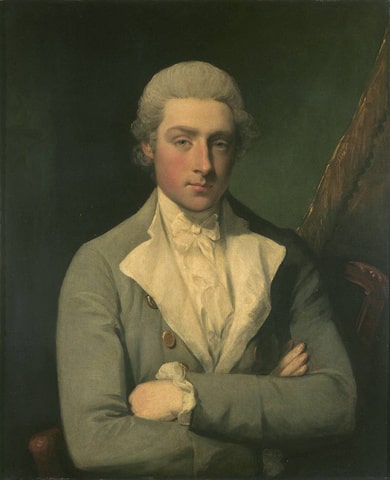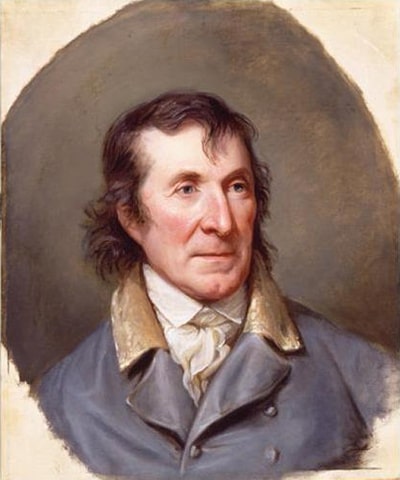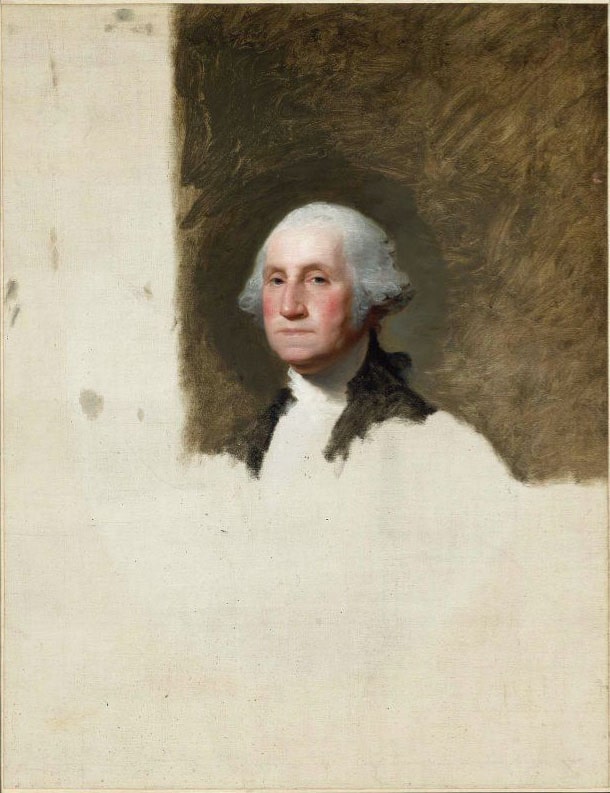Contents

Contents
Quick facts
- Born: 3 December 1755 in Saunderstown, Rhode Island.
- On the eve of the revolution in 1775, Bejamin Stuart left for England and did not return until 18 years later.
- Like almost all of his contemporaries, he studied in London under Benjamin West.
- Between 1795 and 1796 Stuart secured three sittings from President Washington that resulted in three distinct images: the “Vaughan” type (with Washington facing to his left), the “Athenaeum” head (used on the dollar bill and facing to his right), and the “Lansdowne” portrait (full-length).
- Stuart reproduced the Vaughn painting some dozen times and created 130 portraits from the original (unfinished) Athenaeum painting.
- Only four versions of the Landsdowne painting are attributed to Stuart, with the original at the National Portrait Gallery (Smithsonian) in Washington, DC.
- Died: 9 July 1828 in Boston, Massachusetts.
- Buried at the Old South Burial Ground within Boston Common.
Biography

Gilbert Stuart, American painter known especially for his iconic images of George Washington, was born at Sauderstown, Rhode Island in 1755. His father, a native of Perth, Scotland and the son of a Presbyterian minister, had set up a snuff mill in Narragansett and was known as the snuff-grinder.
He studied at Newport under Scottish artist Cosmo Alexander, and went with him to Scotland, but returned to America after Alexander’s death.
In 1775 he went to England; in 1778 he became a pupil of Benjamin West. Stuart’s work, however, shows none of the influence of West, and after four years Stuart set up a studio for himself in London, which met with much success. There he painted George III and the future George IV. In Paris he painted Louis XVI. Living beyond his means he got into financial difficulties, and in 1788 escaped to Dublin, where he was also successful.
After five years in Ireland, Stuart went to New York (1793), then opened a studio in Germantown, Pennsylvania. Early in 1795 Stuart painted his first of three portraits of George Washington.
Washington was 63 and in his second term as president. Said to be the only person in whose presence Stuart found himself embarrassed, the painter tried to strike up a conversation in order to have the great man relax his face — Now, sir, you must let me forget that you are General Washington and that I am Stuart the painter.
Washington replied politely, Mr. Stuart need never feel the need of forgetting who he is, or who General Washington is.
His first portrait of Washington (the Vaughan portrait) was, he felt, a failure — though he did make and sell some 12 copies. But Washington sat for him again, the result being the full-length portrait painted for the Marquess of Lansdowne.
The third painting, the Athenaeum head on an unfinished canvas showing the left side of the face, is Stuart’s famous image of Washington, and it remains the most popular likeness. Though commissioned by Washington (along with one of his wife, Martha), Stuart retained the portrait and used it to paint 130 copies which he sold for $100 each. It is the image featured on the United States one dollar bill for more than a century.

Stuart also painted the five presidents that followed Washington — John Adams, Thomas Jefferson, James Madison, James Monroe, and John Quincy Adams. Other American portraits include John Jay; Generals Horatio Gates, Henry Knox, and Charles Lee; and painters John Singleton Copley, Benjamin West, and Sir Joshua Reynolds.
Stuart settled in Boston in 1805. A profligate spender throughout his life, he had unpaid creditors everywhere he lived, and at his death in 1828, he left his family deeply in debt.
A preeminent colorist, along with his technique and insight into character, make Stuart not only one of the great artists of the Revolution, but one of the masters of portraiture. A marked feature of Stuart’s work is the total absence of lines, his work being painted with a brush from the beginning. It is this process that gives to his modeling its strength and rotundity. His practice was to lay all the tints in their places separately and distinctly alongside of each other before any blending was used, and then they were united by means of a large soft brush without corrupting their freshness.

